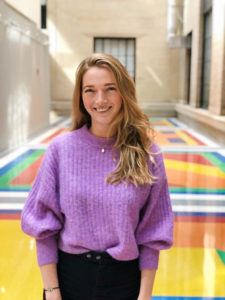 Hailing from evolutionary biology and earth sciences, Nadina now works at the nexus of cities, ecology, and technology. Ahead of Trees, People and the Built Environment 4, Nadina gives us a preview of her presentation, where she will be speaking with Sophie Nitoslawski from the University of British Columbia.
Hailing from evolutionary biology and earth sciences, Nadina now works at the nexus of cities, ecology, and technology. Ahead of Trees, People and the Built Environment 4, Nadina gives us a preview of her presentation, where she will be speaking with Sophie Nitoslawski from the University of British Columbia.
#TheBigIdea and the next frontier in urban ecosystem management is the #InternetofNature. Our cities are going digital. From self-driving cars to smart grids to intelligent traffic signals, smart cities put data and technology to work to drive efficiency and improve the quality of life for all citizens. But the natural capital cities rely on risks being left behind by the digital revolution. The “Internet of Nature” (IoN) bridges the gap between greener and smarter cities and explores the future of ecosystem management in an age of rapid urbanisation and digitisation.
Why is your presentation important for our conference?
#TPBE4 attracts foresters, arboriculturists, architects, planners, engineers, and academics from across the globe. I look forward to introducing the #InternetofNature, showing the value it can bring, and inspiring this interdisciplinary group to grab hold of the potential emerging technologies can offer this sector. The #InternetofNature will provide ecosystem intelligence to design, manage, and connect urban ecosystems like never before. Together, we can disrupt urban forestry to build truly resilient cities.
What are the biggest challenges facing green infrastructure?
Urban forestry and green infrastructure are facing some major challenges, now and in the future.
- Trees need moist, well-aerated, and uncompacted soil to mature in the urban environment. Conditions of this kind enable the tree’s roots to access nutrients, oxygen, and water – all essential for healthy tree growth. Giving urban trees the soil they need will give them a fighting chance to survive and — ultimately — thrive.
- Some 50% of the typical urban canopy resides on private lands, where cities have little jurisdiction. Emerging technologies like frequent, sub-meter resolution satellite imagery, drones, and LiDAR will allow tree ordinance officers to protect and retain privately-owned trees in a just way.
- Financing both tree planting and, most importantly, tree maintenance will always remain a challenge. Monitoring canopy changes (loss, gain, disease outbreak, illegal removals) in near real-time will help city officials break down the true economic value of their valuable green assets.
What impact is your working making in the built environment?

My PhD in Ecological Engineering keeps me at the forefront of urban techno-ecological research. Studying the complex but meaningful potential between urban ecology and emerging technologies drives me to implement these ideas into practice. My research uses soil respiration sensors as a proxy to measure tree-microbial associations across the urban forest, an attempt to track the urban #woodwideweb. Our work at Green City Watch allows us to bring the latest advancements in very high-resolution remote sensing to arborists and foresters, to monitor and maintain a healthy urban canopy.
How do we build resilient places for us to live in for the future?
When charting the history of urbanisation, it is clear that humans have always been attracted to sites with a great natural variety in plants and animals. Urban development, on the other hand, is often regarded as a blank canvas, when in fact, it’s more like a finished landscape painting. We must consider the natural ecosystem cities are built on — and rely on — if we’re to build truly resilient cities.
How did you get into your role?
Growing up, I’d always been fascinated by wilderness, and especially by how encroaching urban development seemed to swallow it whole, spitting out manicured green spaces sprinkled in between buildings and highways. Since then, I’ve dedicated my life to building better places for people to live. Places where humans and nature can live in harmony. Technology is a large part of the remedy and I’m keen to show people how it can be applied to protect, maintain, and foster urban forestry.






